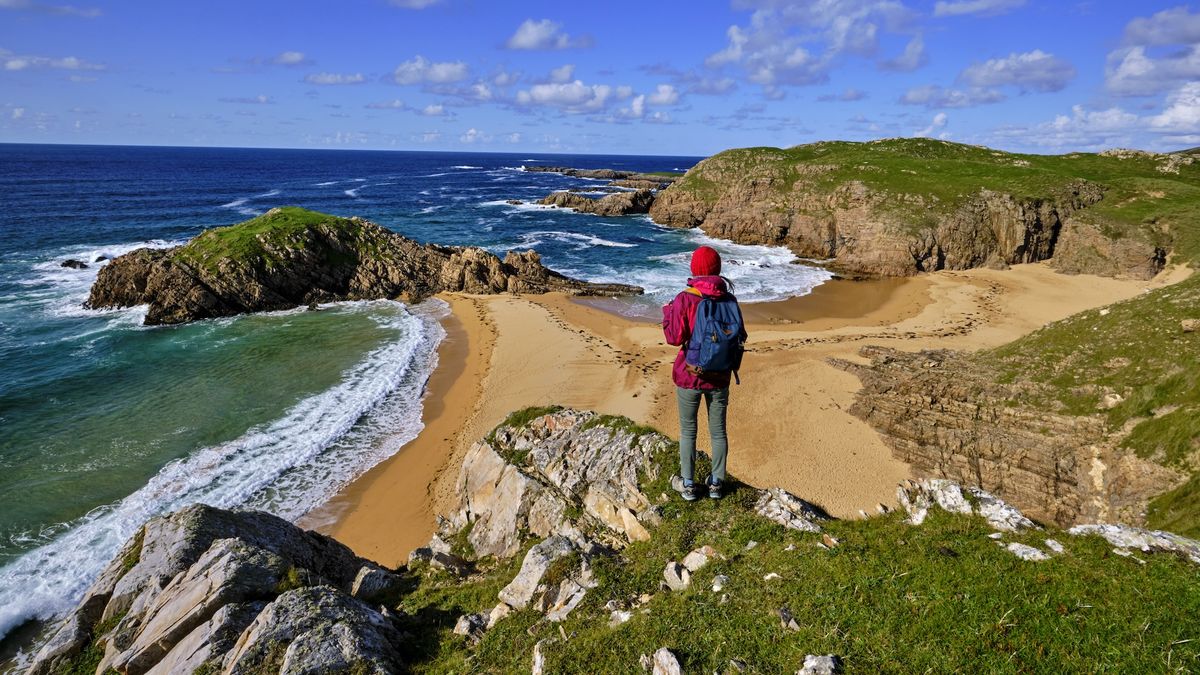Flanked with fjords and inlets, Alaska is the state with the most coastline in the United States. But what is the length of its oceanic coast?
It depends on whom you ask. According to the Congressional Research Service, the number is 6,640 miles (10,690 kilometers). But if you consult the National Oceanic and Atmospheric Administration (NOAA), the coastal edges of the state total 33,904 miles (54,563 km).
“So what is going on here? Why are there different definitions of the coastline or coastline length?” asked Ryan Stoa, an associate professor of law at Louisiana State University. He first stumbled upon these “wildly divergent reports” while researching coastline changes and their relationship to landowner rights. Bewildered by the discrepancy between federal agencies, Stoa’s questions on coastal length led him to a curious mathematical conundrum that’s been bugging experts for decades: the coastline paradox.
The coastline paradox occurs because coasts are not straight lines, and this makes them difficult, or impossible, to measure definitively. From an aircraft, you can see that the coast has many features, including bays, inlets, rocks and islands. And the closer you look, the more nooks and crannies you’ll find.
As a result, the length of a coastline depends on the size of the ruler you use. “If you use a really long ruler to measure your coastline, you could just get a big square around your country or Island,” explained Katherine Sammler, a geographer at the University of Twente in the Netherlands. But if you used a smaller ruler, you’ll capture more complexity, resulting in a longer measurement. Hence, a paradox.
Related: What is the longest possible walk on Earth?
This measurement inconsistency has fascinated mathematicians for decades. According to work published in 1961, English mathematician Lewis Fry Richardson noted how different countries had different lengths for the same shared border because of differences in scales of measurement. In 1967, mathematician Benoit Mandelbrot expanded on Richardson’s work, writing a classic Science paper on the length of Britain’s coastline. This later led him to discover and conceptualize the shape of fractals, a curve that has increased complexity the more you zoom in. Mathematically, the length of all fractals diverge to infinity, since in theory, you can zoom into these shapes indefinitely.
This can hold true for coastlines. You could technically measure a coastline down to the grain of sand or atomic level or smaller, which would mean a coastline’s length could be close to infinity, Sammler said.
However, measurements for coastlines’ lengths exist, primarily because maps break landscapes down into simpler lines and shapes. Inches on a map can equal a distance in real life, depending on the map’s resolution.
The problem is that different datasets will have different resolutions, leading to varying coastline lengths. These disparate measures can have real-world implications. For instance, international laws like the U.N. Convention on the Law of the Sea depends on coastal baselines to determine “how far out each coastal nation’s resource rights go,” Sammler said, “which can then have really important issues for how many resource rights [a country] might get.” Although official bodies like the U.N. have specifications for mapping resolution, there is a fair amount of wiggle room on how their guidelines can be interpreted between countries.
“We just have to agree on what unit of measurement we’re using,” Stoa said, “And the problem, from a practical human point of view, is that there’s really no consensus on what unit of measurement should be used to measure coastlines.”
Coastlines are also shifting entities. Tides, coastal erosion and sea level rise all contribute to the fluctuating state of coastlines. So maps from the 1900s, or even satellite imagery from a few years ago, may not resemble what coastlines really are today. “It really doesn’t take a lot of sea level rise to start to change these boundaries,” Sammler said.
So how much coastline does Alaska, the United States, or our entire planet, have? We may never know the accurate number. It’s a paradox, and like many things in nature, escapes our ability to define it.
